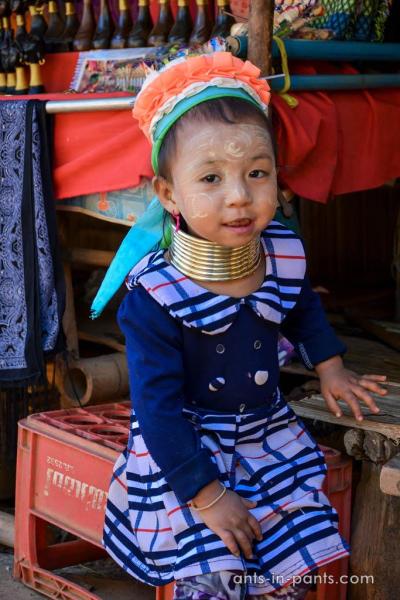After seeing the real Karen village, we set off to the tourist one. It is one of the multiple villages between Chiang Rai and Chiang Mai, with several sectors, each dedicated to a different tribe.
You can use GPS coordinates to find this place (19.35712; 99.01796).

Akha tribe has a Tibetan origin and they now live in China, Burma, and in the north of Thailand. Something special about their villages is the gate set up at the entrance of each village to frighten off bad spirits.

Akha live on agriculture and selling handicrafts.


Yao tribe lives in China, Vietnam, Laos, and Thailand, and they are the only hilltribe people in Thailand with the written language. Usually, their villages are situated low in the hills and they build the houses along the roads. The economy of Yao was long based on opium cultivation and sale, while Yao themselves were rarely drag addicted. At the moment, the opium cultivation is illegal, which is why Yao have to look for other ways to earn money.


Unlike Yao, Lahu tribe lives high in the hills of Northern Thailand, China, Burma, and Laos. The tribe is subdivided into black, red, yellow and she-leh peoples. They grow cattle and food, which does not make them very rich.

In Lahu village, you will watch the performance – to please tourists.
Your visit is to culminate in the Karen village.



Even children learn to pose for pictures here: a tourist has paid!

Karen girls start wearing rings on their necks and joints starting with 5 years. This is not a tradition anymore; this is done only to make a kind of zoo for western tourists. The rings do not only traumatize the neck; they are also very heavy.


The men do not wear the rings.

The tribe museum in Chiang Rai tells a lot about how artificial these villages are, and indeed, this is a human zoo rather than authentic experience. It may seem that everything is very bright and true-to-life here, but in the reality the representatives of different tribes were just driven to this territory to be shown to tourists. Most of the tourists come here for the Karen, or long-neck tribe. Businessmen bring Karens from Burma and settle them in the village to attract tourists for about 6 euros for the entrance fee for each. They do not allow Karens leaving the village: what if the tourists see the whole thing for free?
If you are interested in indigenous peoples, this is an eternal question when you travel: to visit them or not? This mostly turns into the tourist trap, and also this may financially support the tribes; however, often the support is not great, rather the ethical norms are not followed. It is up to you them whether to visit tourist Karen villages or not.





No Comments